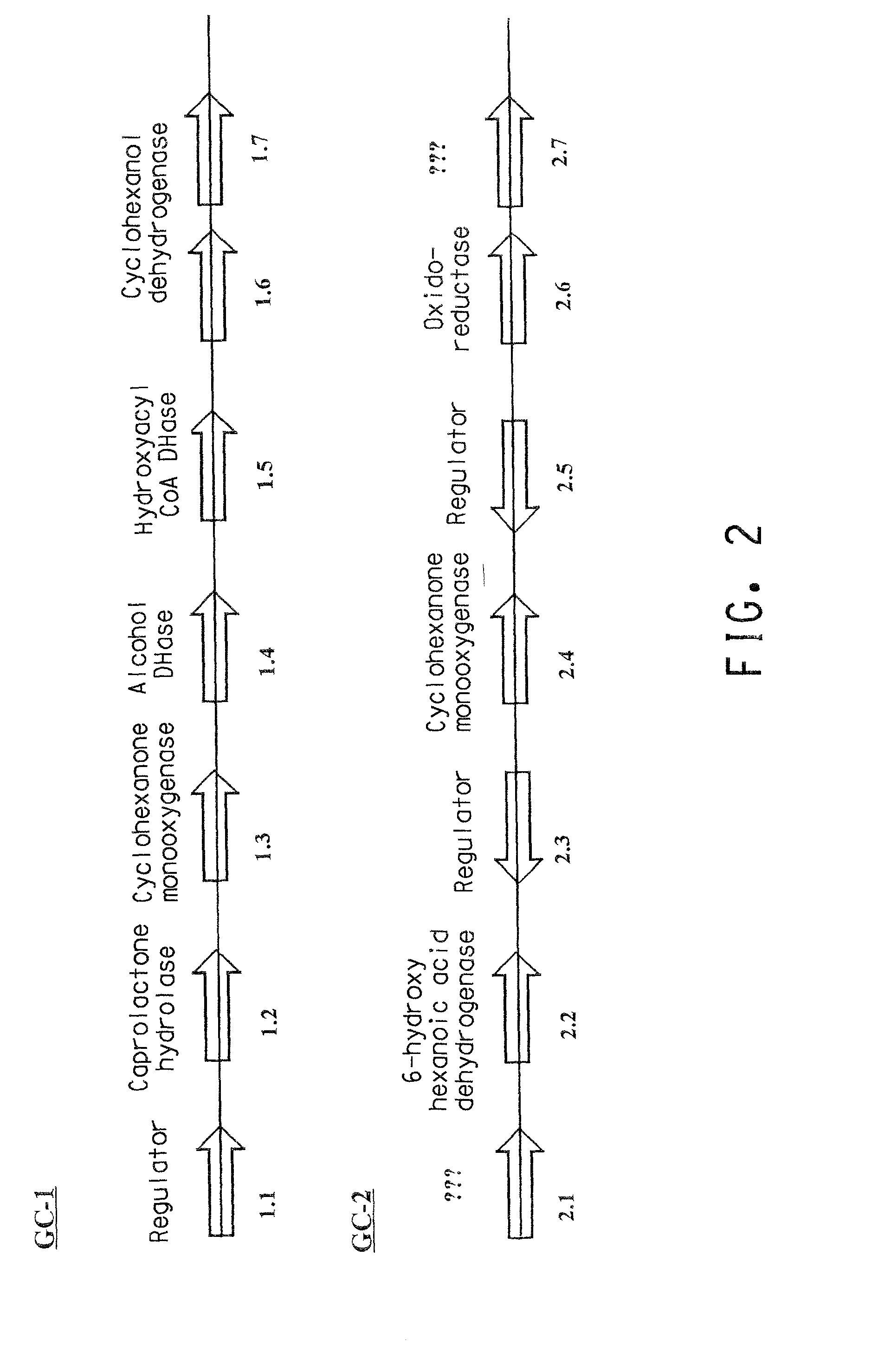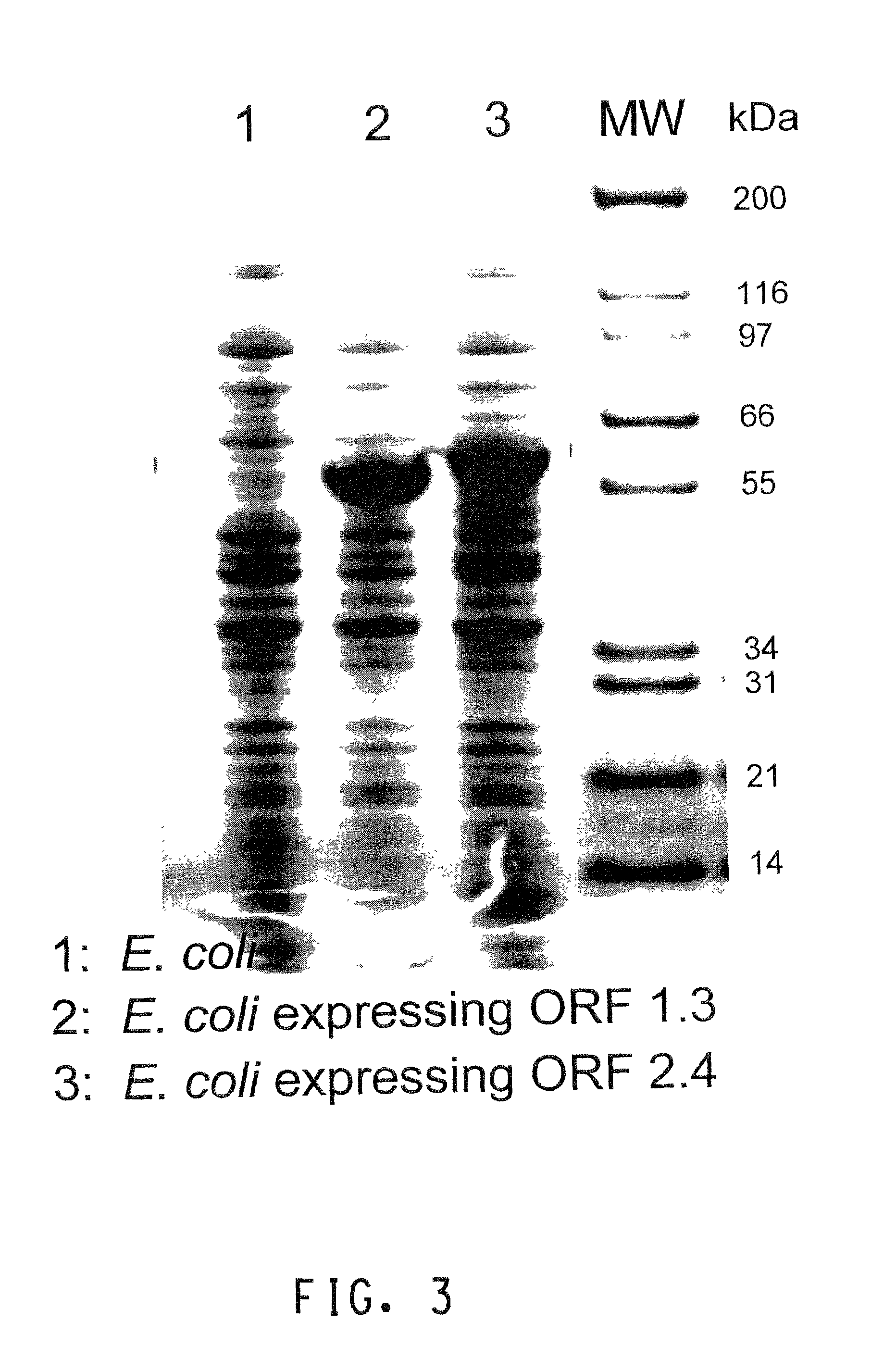Genes and enzymes for the production of adipic acid intermediates
a technology of adipic acid intermediates and genes, applied in the field of molecular biology and microbiology, can solve problems such as unsatisfactory processes
- Summary
- Abstract
- Description
- Claims
- Application Information
AI Technical Summary
Benefits of technology
Problems solved by technology
Method used
Image
Examples
example 1
Isolation of a Cyclohexanone Degrading Brevibacterium sp. HCU
[0140] Selection for a halotolerant bacterium degrading cyclohexanol and cyclohexanone was performed on agar plates of a halophilic minimal medium (Per 1: Agar 15 g, NaCl 100 g, MgSO4 10 g, KCl 2 g, NH4Cl 1 g, KH2PO4 50 mg, FeSO4 2 mg, Tris HCl 8 g, pH 7) containing traces of yeast extract and casaminoacids (0.005% each) and incubated under vapors of cyclohexanone at 30.degree. C. The inoculum was a resuspension of sludge from industrial wastewater treatment plant. After two weeks, beige colonies were observed and streaked to purity on the same plates under the same conditions.
[0141] Taxonomic identification was performed by PCR amplification of 16S rDNA using primers corresponding to conserved regions of the 16S rDNA molecule (Amann).
[0142] These primers were:
3 5'-GAGTTTGATCCTGGCTCAG-3' SEQ ID NO:28 5'-CAGG(A / C)GCCGCGGTAAT(A / T)C-3' SEQ ID NO:29 5'-GCTGCCTCCCGTAGGAGT-3' SEQ ID NO:30 5'-CTACCAGGGTAACTAATCC-3' SEQ ID NO:31 5...
example 2
Identification of Genes Involved in the Oxidation of Cyclohexanone
[0147] Identification of genes involved in the oxidation of cyclohexanone made use of the fact that this oxidation pathway is inducible. The mRNA populations of a control culture and a cyclohexanone-induced culture were compared using a technique based on the random amplification of DNA fragments by reverse transcription followed by PCR.
[0148] Isolation of Total Cellular RNA
[0149] The cyclohexanone oxidation pathway was induced by addition of 0.1% cyclohexanone in one of two "split" cultures of Brevibacterium HCU grown as described in the GENERAL METHODS. Each 10 ml culture was chilled rapidly in an ice / water bath and transferred to a 15 ml tube. Cells were collected by centrifugation for 2 min. at 12,000= g in a rotor chilled to -4.degree. C. The supernatants were discarded, the pellets resuspended in 0.7 ml of ice cold solution of 1% SDS and 100 mM Na acetate at pH 5 and transferred to a 2 ml tube containing 0.7 ml ...
example 3
Cloning Sequencing and Identification Of ORF's On GC-1 And GC-2
[0160] Kilobase-long DNA fragments extending the sequences fragments identified by differential display were generated by "Out-PCR", a PCR technique using an arbitrary primer in addition to a sequence specific primer.
[0161] Genomic DNA was used as template in 10 separate 50 .mu.l PCR reactions using the long range rTth XL DNA polymerase (Perkin-Elmer, Foster City, Calif.) and one of 10 arbitrary primers described above. The reaction included the rTth XL buffer provided by the manufacturer, 1.2 mM Mg Acetate, 0.2 mM of each dNTP, genomic DNA (10-100 ng) and 1 unit of rTth XL repolymerase. Annealing was performed at 45.degree. C. to allow arbitrary priming of the genomic DNA and the DNA replication was extended for 15 min. at 72.degree. C. At that point each reaction was split in two. One of the two tubes was kept unchanged and used as a control while the other tube received a specific primer corresponding to the end seque...
PUM
| Property | Measurement | Unit |
|---|---|---|
| Fraction | aaaaa | aaaaa |
| Angle | aaaaa | aaaaa |
| Acidity | aaaaa | aaaaa |
Abstract
Description
Claims
Application Information
 Login to View More
Login to View More - R&D
- Intellectual Property
- Life Sciences
- Materials
- Tech Scout
- Unparalleled Data Quality
- Higher Quality Content
- 60% Fewer Hallucinations
Browse by: Latest US Patents, China's latest patents, Technical Efficacy Thesaurus, Application Domain, Technology Topic, Popular Technical Reports.
© 2025 PatSnap. All rights reserved.Legal|Privacy policy|Modern Slavery Act Transparency Statement|Sitemap|About US| Contact US: help@patsnap.com



